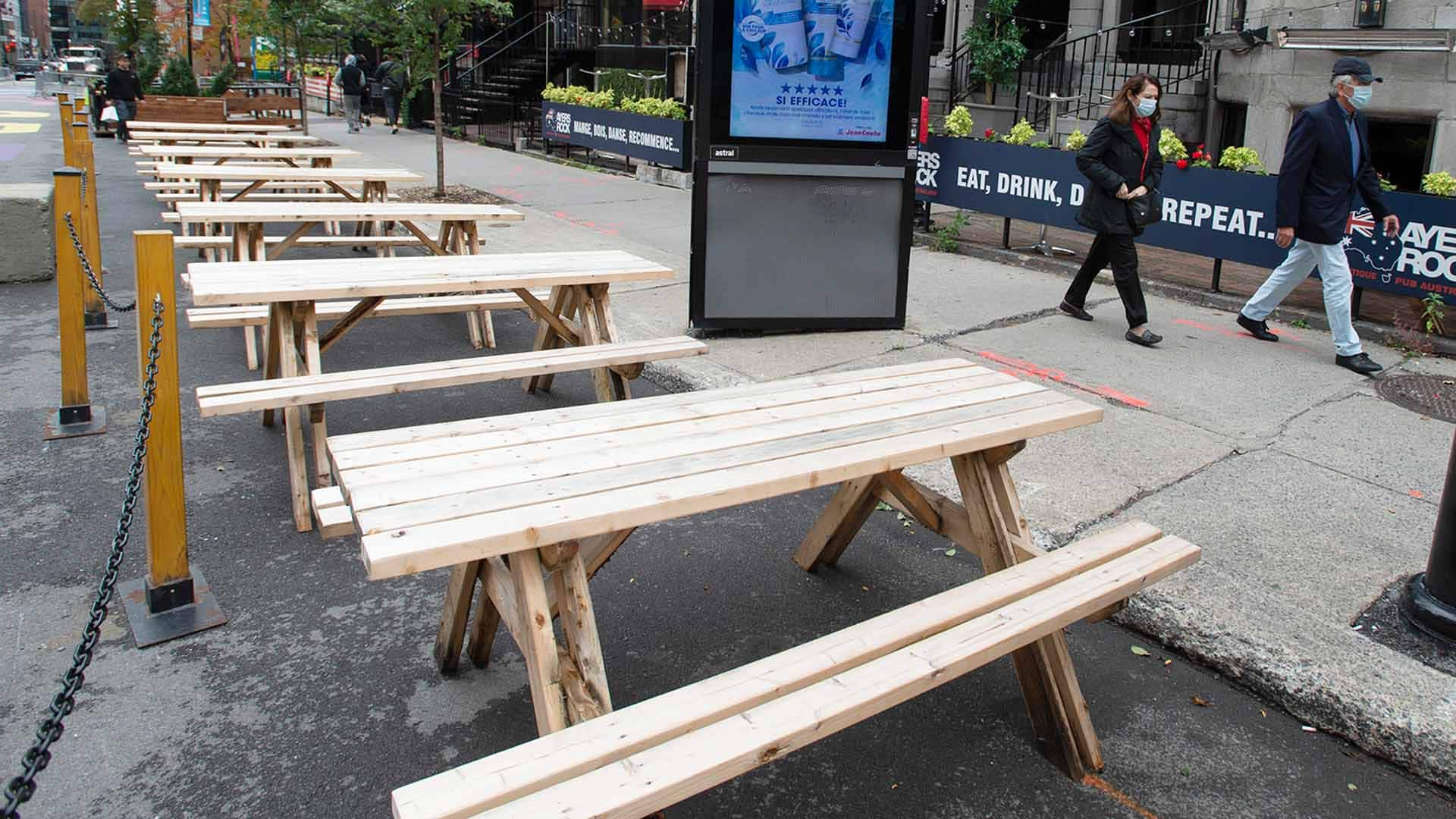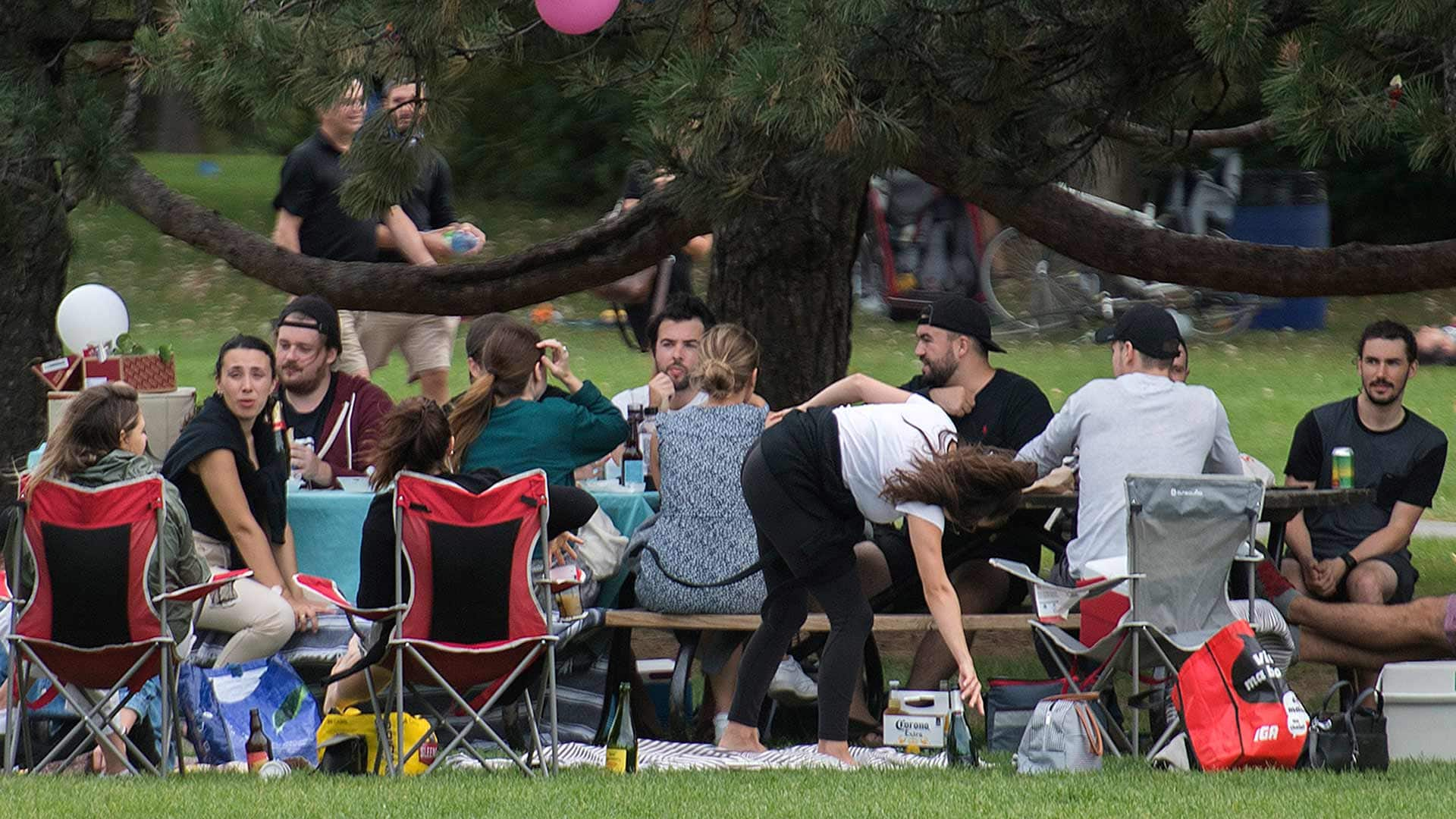This is an excerpt from Second Opinion, a weekly roundup of health and medical science news emailed to subscribers every Saturday morning. If you haven’t subscribed yet, you can do that by clicking here.
At first glance, Canada’s second wave of COVID-19 is looking a lot different than the first wave.
Testing capacity has drastically improved, barriers to getting tested have been lowered, stocks of personal protective equipment have grown, and while we still don’t have a safe and effective vaccine — we know a lot more about COVID-19 and how to treat it.
And despite a rapid rise in new cases across the country, hospitalizations and deaths are comparatively lower so far, which might lead you to believe the second wave will be less dangerous than the first.
“It may seem somewhat comforting to say, ‘Yes, there are a lot of cases, but we’re not seeing our hospitals overwhelmed, and we’re not seeing a huge number of deaths so far. So things are better, right?'” said Dr. Samir Sinha, director of geriatrics at Sinai Health and University Health Network in Toronto.
“The truth of the matter is, we’re just getting started.”
Sinha said COVID-19 outbreaks typically followed a predictable pattern: people increase their number of contacts amid relaxed restrictions, then weeks later cases rise, hospitalizations spike and more deaths occur.

“We need to modify our behaviour and do everything we can to try and wrestle it down as soon as possible,” he said.
“If we don’t, we’re going to be thinking back a month from now saying, ‘What were we doing, and why did we even allow it to get this bad?'”
Some provinces could face worse 2nd wave
In Canada’s hardest-hit provinces, cracks are already beginning to show.
“The second wave isn’t just starting. It’s already underway,” Prime Minister Justin Trudeau said last week. “The numbers are clear.”
Ontario public health officials are projecting up to 1,000 new cases per day this month, and the number of patients in the province’s hospitals with confirmed cases of COVID-19 doubled in just one week.
Testing backlogs in Ontario also reached a record high of more than 90,000 this week, and the province’s associate chief medical officer of health, Dr. Barbara Yaffe, said the number of contacts per COVID-19 case is “much higher” than in the first wave.
“We did lose focus over the summer, and we didn’t quite do enough to prevent a second wave,” said Dr. Irfan Dhalla, vice-president of physician quality at Unity Health, which includes St. Michael’s and St. Joseph’s hospitals in Toronto.
“Everybody who works in health care is extremely worried, and now we need to think about what do we do to stop the second wave, and what do we do to prevent the third wave?”
WATCH | Premier Ford introduces more restrictions in Ontario:

Though focused primarily on Ottawa, Toronto and Peel Region, Ontario Premier Doug Ford unveiled new public health measures for the province to stop the spread of the coronavirus. 3:57
Ontario introduced stricter public health measures on Friday, including pausing social circles and mandating mask-wearing provincewide where physical distancing isn’t possible, while targeting current hot spots like Toronto, Ottawa and Peel Region as the province reported a record-high 732 daily cases of coronavirus.
Quebec recorded more than 800 new daily cases three times this week, its highest daily increase since May, including 933 on Thursday and 1,052 on Friday.
The seven-day rolling average of cases in the province also increased 68 per cent with 16 more deaths reported Thursday, and there are already more than 5,000 health-care workers in the Montreal hospital network on leave.
Quebec also unveiled new legal tools for police to enforce stricter public health measures taking effect in the province’s designated red zones.
“Lives are at stake. We want to keep our children in schools,” Quebec Premier François Legault said Wednesday. “We also want to protect our health network.”
WATCH | Quebec’s red zones shut down for 28 days to slow COVID-19 spread:

Red zone restrictions are in effect in three Quebec areas, including Montreal and Quebec City, meaning bars are closed and restaurants no longer have indoor dining for the next 28 days as the province tries to manage a spike of COVID-19 cases. 2:01
British Columbia reported 14 outbreaks in long-term care or assisted-living facilities and three in acute-care facilities but has so far managed to avoid outbreaks in schools and has kept its daily average of cases trending downward for now.
Alberta announced a total of 67 cases tied to outbreaks at Calgary’s Foothills hospital — the second largest outbreak at a health-care institution in the province since the pandemic began.
Sinha said the rising case numbers across the country are lagging indicators that will likely lead to increases in hospitalizations and deaths — suggesting older Canadians may be next to feel the brunt of the pandemic.
“It’s only a matter of time before we start seeing older members of our society start catching this and then the consequences, unfortunately, become quite apparent,” he said.
“Now if we’re looking at a second wave that’s going to be bigger than the last wave, we know that this is going to result in likely thousands of older people dying.”
Lessons from the 1st wave
Let’s look at what we learned in the first wave of the pandemic in Canada.
Older Canadians who are at higher risk of serious outcomes of COVID-19 paid a terrible cost, with those over 70 accounting for almost 90 per cent of all deaths in Canada.
Coronavirus outbreaks hit the poorest and most diverse neighbourhoods of our major cities incredibly hard, while Black Canadians were more likely than others to be infected or hospitalized by the disease.
We’ve also learned that physical distancing, wearing a mask and limiting your close contact with others — especially in confined settings with low ventilation — drastically reduce your risk of catching it.
Asymptomatic transmission was also identified as a real and tangible threat, and superspreading events have also been recorded, most recently in the largest contact tracing study to date from India this week.
But the virus also hasn’t significantly mutated to become any less infectious or less deadly.
WATCH | Re-examining the role of COVID-19 superspreaders:

More research into how COVID-19 is spread shows that because not everyone sheds the same amount of virus, many infections are spread by a few people known as superspreaders. 2:01
“This is still a virus that hospitalizes people, and it still kills people, and it is still challenging to treat, and it is still disrupting the entire world,” said Dr. Amesh Adalja, an infectious disease physician and a senior scholar at the Johns Hopkins Center for Health Security.
“The virus hasn’t changed. It’s still the same biologically. It’s just that now we have much more in our tool belt.”
Adalja said despite the fact that health-care workers are getting more adept at treating it and there’s a better survival rate for those who are hospitalized, we still need to take the second wave seriously.

“We still need more tools. We still don’t have a tool that can prevent somebody who’s infected from needing hospitalization,” he said.
“Absent that, I think we still have to really be aggressive with controlling community spread.”
What can we do to slow the 2nd wave?
Steven Hoffman, director of the Global Strategy Lab and a global health law professor at York University in Toronto who studies pandemics, said it’s important to remember the second wave of COVID-19 is no less of a threat than the first.
“It’s everyone’s hope that we’ll be better prepared to deal with the second wave because we’ve learned so much from the first wave,” he said.
“But this virus remains as dangerous as it was before, and I’m actually even more worried for the second wave.”
Hoffman said he became concerned early in the summer when hard-hit provinces began lifting restrictions because not enough was being done to prepare Canadians for the possibility that lockdowns could be reimposed.
“No one was told from our political leaders that we’re now able to temporarily lift these measures until a time when they’ll likely be needed,” he said. “That’s just not the way to prepare people.”
Adalja said the threshold for re-entering lockdowns in the second wave needs to be “data-driven” and targeted toward activities that are proven to lead to spread in specific regions.

The ‘big worry’
“You should only use a lockdown when you have fouled up your response so bad that that’s all you have left to do,” he said.
“You don’t want people to behave as if we’re not in a pandemic on the one hand, and on the other hand the alternative isn’t just to completely shut the whole country down again.”
Hoffman said one of his biggest concerns is whether Canadians will be resistant to the idea of re-entering lockdown, if it’s deemed necessary.
“We know that people are exhausted from containment measures, and my big worry going into a second wave is that people won’t be willing to follow public health directives, which we all really need to do,” he said.
“That’s when this pandemic would become much worse than it is and potentially worse than the first wave.”
To read the entire Second Opinion newsletter every Saturday morning, subscribe by clicking here.














Leave a comment